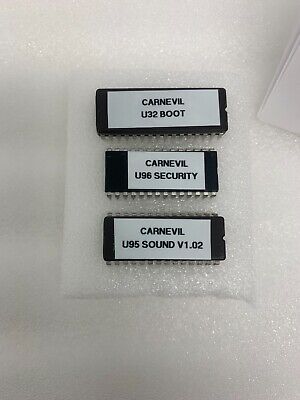Canon FX Light Seals
For camera enthusiasts, the Canon FX is more than just a piece of equipment; it’s a gateway to creativity. However, like any cherished tool, its performance can wane over time. One often overlooked aspect that significantly impacts image quality is the light seal thickness. Light seals play a critical role in preventing unwanted light leaks that can ruin your shots and degrade your film’s overall integrity.
Replacing these seals might sound daunting at first, but with the right guidance and a little DIY spirit, you can breathe new life into your beloved Canon FX. Whether you’re an experienced photographer or someone just starting their journey in film photography, understanding how to maintain and replace your camera’s light seals will ensure you capture stunning images for years to come. Let’s dive into why paying attention to Canon FX light seal thickness matters—a small detail that yields big results!
Benefits of Replacing Light Seals
Replacing light seals in your Canon FX can significantly enhance your photography experience. Over time, aging seals may degrade, causing light leaks that ruin your shots.
A fresh set of seals ensures proper functionality. This means you can shoot with confidence, knowing that unwanted light won’t be creeping into your images.
Moreover, new light seals improve the camera’s overall integrity. They help maintain the internal environment by keeping dust and moisture out.
This simple DIY task not only revives your equipment but also extends its lifespan. You’ll notice clearer images and better color accuracy after replacement.
Taking on this project gives you a deeper understanding of how your camera works. It’s a rewarding way to engage with your gear while enhancing performance at the same time.
Tools and Materials Needed for DIY Replacement
Before diving into the replacement of your Canon FX light seals, gather the necessary tools and materials. This preparation will ensure a smooth process.
Start with a soft cloth to keep your workspace clean. A can of compressed air is also essential for clearing dust from inside your camera.
Next, you’ll need a craft knife or precision blade. This tool will help you remove old seals without damaging the surrounding areas. Tweezers are handy for placing new material precisely.
For replacing light seals, high-quality foam tape or adhesive-backed felt works best. Ensure it’s thin enough to match the original seal thickness but durable enough to last over time.
Don’t forget some rubbing alcohol and cotton swabs for cleaning surfaces before applying new seals. These items create an ideal environment for adhesion and longevity in your repairs.
Step-by-Step Guide to Replacing Canon FX Light Seals
Start by gathering all your tools and materials. You’ll need soft cloths, a small screwdriver set, adhesive, and replacement light seals specific to the Canon FX.
Carefully remove the camera back using the appropriate screwdriver. Take your time; you don’t want to damage any screws or components.
Once open, gently peel away the old light seals. Use a plastic spatula if necessary to avoid scratching surfaces.
Next, clean the area where you’ll apply new seals. Ensure it’s free of dust and residue for better adhesion.
Cut your new light seal material according to size specifications. This is crucial for preventing light leaks.
Apply adhesive sparingly on both sides of the seal before positioning it into place with precision.
Reassemble everything in reverse order while keeping an eye out for proper alignment throughout this process.
Tips and Tricks for a Successful Replacement
When replacing the Canon FX light seals, preparation is key. Start by cleaning the surfaces thoroughly where the old seals were removed. Dust and residue can interfere with adhesion.
Use a sharp blade for precise cuts when trimming your new seals to size. This ensures a snug fit, reducing the risk of light leaks later on.
Apply adhesive evenly; too much can create mess or bubbles beneath the seal, compromising its effectiveness. A steady hand will yield better results.
Consider working in a well-lit area to avoid misalignment during installation. It’s easy to miss small details when visibility is low.
Allow ample time for everything to set properly before reassembling your camera. Patience pays off in achieving that perfect seal integrity necessary for optimal performance.
Common Mistakes to Avoid
When replacing the light seals on your Canon FX, a few common mistakes can lead to frustrating results. One of the biggest errors is neglecting to clean the old adhesive properly. Residue left behind can prevent new seals from adhering correctly.
Another frequent pitfall is using the wrong thickness of seal material. Choosing an incorrect size not only affects light leakage but can also interfere with camera functionality. Always double-check your measurements.
Additionally, rushing through installation often leads to misalignment. Take your time and ensure each piece fits snugly in place without gaps.
Don’t forget about testing after replacement. It’s vital to check for any signs of light leaks before hitting that shutter button again. A little patience goes a long way in achieving optimal results with your Canon FX light seal thickness project.
Optimize Your Camera with Canon FX Light Seal Thickness
Optimizing your camera is essential for capturing stunning images. One often-overlooked aspect is the Canon FX light seal thickness. This component plays a crucial role in preventing light leaks, which can ruin photographs.
By ensuring the right thickness of your light seals, you enhance not just image quality but also extend the lifespan of your camera. Properly fitted seals create a tight barrier against dust and moisture, safeguarding sensitive internal mechanisms.
When replacing or adjusting these seals, choosing high-quality materials is vital. The ideal thickness contributes to optimal performance while maintaining aesthetic integrity. Experimenting with different thicknesses might yield surprising results as every camera has its unique needs.
Pay attention to manufacturer specifications and user feedback when selecting new seals. With the right approach, achieving exceptional photographic outcomes becomes more attainable than ever before!
The Ultimate Guide to Canon FX Light Seal Thickness
When it comes to the Canon FX, understanding light seal thickness is crucial. Light seals protect your camera’s interior from stray light and dust. The right thickness ensures optimal performance.
Typically, these seals vary in dimensions based on model wear and tear. A worn or inadequate seal can lead to exposure issues during shooting. Therefore, knowing the specific measurements helps you make informed replacements.
For DIY enthusiasts, measuring existing seals before replacement is essential. Many resources provide standard thickness values for reference. However, custom fitting may yield better results if your camera has seen extensive use.
Remember that different areas of the camera might require varying seal sizes. Pay close attention when disassembling your Canon FX to note where each piece fits best. This precision will enhance the longevity of your beloved gear without compromising image quality.
Canon FX Light Seal Thickness: Maintenance and Replacement Tips
Proper maintenance of your Canon FX light seals is crucial for optimal performance. Regularly check the condition of the seals, as wear and tear can affect image quality.
When replacing light seals, choose high-quality foam that matches the original thickness. This ensures a snug fit and prevents light leaks. Measure existing seal thickness carefully before purchasing replacements.
Clean the camera body gently to remove any residue from old adhesive. A soft cloth and mild cleaning solution work wonders without damaging surfaces.
During installation, apply an even layer of adhesive for secure placement. Allow it to cure fully before using your camera again; this will maximize durability.
Keeping spare materials on hand can be beneficial for future repairs. Staying proactive about maintenance will extend your camera’s lifespan significantly while enhancing its overall performance in photography.

Getting the Best Results with Canon FX Light Seal Thickness
Achieving the best results with Canon FX light seal thickness requires attention to detail and a commitment to maintaining your camera. Regular checks of seal condition can prevent light leaks that compromise image quality.
Understanding the ideal thickness for replacement seals is crucial, as using materials that are too thick or too thin can affect functionality. A balanced approach ensures proper fitment without interfering with camera operation.
Consider investing time in learning about various sealing materials available on the market. Some offer better durability against wear and tear, while others provide superior protection from environmental factors like dust and moisture.
Always document your process when replacing seals. Keeping track of measurements and material choices will make future replacements easier and more efficient. Engaging in forums dedicated to vintage cameras may also provide insights from fellow enthusiasts who have tackled similar projects.
By placing an emphasis on regular maintenance, you not only extend the life of your Canon FX but also enhance its performance—bringing vivid memories into sharper focus every time you capture an image.



